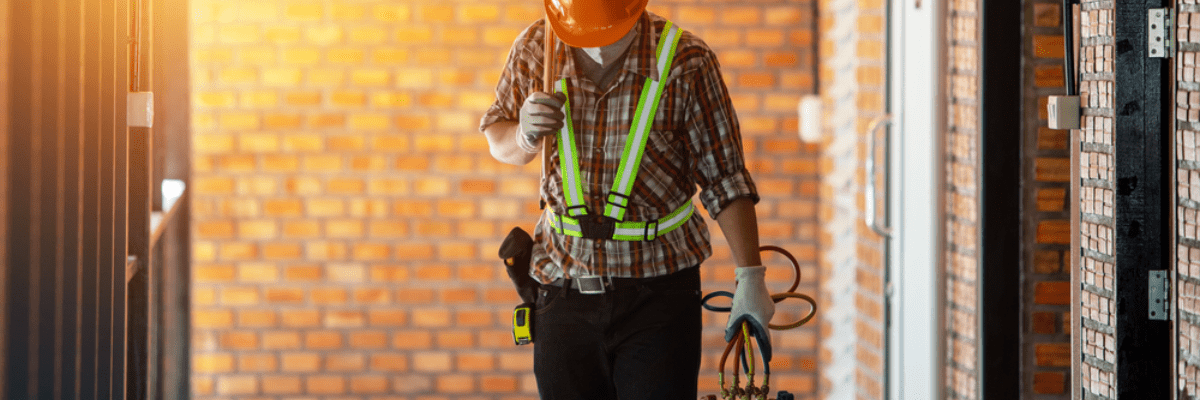Impacts of COVID-19 on the NYC HVACR service industry
As the summer began and New York City entered phase 2 of its reopening plan, we asked HVACR union contractors (MSCA of New York members) to share their current work status and the impact of COVID-19 on their business operations and hiring plans.
Here is how they responded.
Business impacts and predictions from HVACR service providers
Even during the time when New York City was completely locked down, more than a third of HVACR service providers reported that between 26 and 50 percent of their customer base remained open and allowed them to work on systems. Another third reported that more than half of their customers continued to request service during this time.
Not surprisingly, those providers that serve a high percentage of essential businesses reported more access to customer systems.
Half of respondents indicated that they already knew of commercial customers that would not be reopening. On the plus side, a third of respondents said those lost customers accounted for less than 5 percent of their business. However, another half said the lost customers could account for up to 25 percent of their overall business.
And, it’s important to keep in mind that these numbers represent only the customers that respondents already knew would not reopen as of the beginning of Phase 2. It’s possible that the number of lost customers will grow as providers learn which businesses have been unable to survive due to the pandemic.
Most respondents (81 percent) indicated that customers have asked for changes and reductions to service agreements, and the same number expect more reductions as struggling commercial customers look to cut costs or have a reduced need for service due to changes in building usage.
The majority (60 percent) said up to 15 percent of customers had asked for service agreement reductions as of mid-June. However, a sizable portion (27 percent) indicated that up to 30 percent of customers asked for service agreement reductions. A few service providers reported even more requests for service agreement changes.
Most respondents expect service agreement changes to reduce their overall business revenue. The largest group (50 percent) expect revenue to decline by 15 percent or less due to service agreement changes. A few respondents expect up to a 60% reduction in business due to service agreement changes.
Some good news: less than a third of respondents reported losing customers to non-union shops in the past 3 months (presumably due to cost cutting measures related to the pandemic). Those that did lose customers to non-union shops reported impacts of less than 5 percent.
The largest group did not expect any uncollectible invoices for work in March to May, which might reflect the fact that many were not operating at full capacity. However 20 percent did predict that up to 5 percent of work will remain unpaid, and smaller groups expect as much as 40 percent of invoices from the period to be unpaid.
It looks like the business impacts of COVID-19 will extend far beyond the time when businesses were closed down and owners were unable to allow service workers into their properties.
A full two-thirds of respondents expect to lose up to 25 percent of their businesses due to commercial customers that can’t reopen and go out of business entirely. The remaining respondents expect to lose up to 40 percent or more.
We asked business owners and managers to make some difficult predictions here, and the results were mixed. Almost half optimistically predict a return to normal within 6 months. A smaller group (19 percent) expect that to take 6 to 12 months, and a third expect recovery to take longer than a year. In recent conversations with service providers, we are hearing that some of these predictions are impacted by concerns about a second wave of the virus closing the city down again in the fall.
HVACR industry staffing impacts and predictions
In spite of reported business impacts and some troubling predictions, most HVACR employers were able to return to normal or near-normal staffing levels by May 31.
Employers seem less certain that they can maintain those staffing levels after the busy season drops off without the support of new customers or continued PPP assistance.
The October predictions likely reflect normal seasonal employment numbers.
Over 70% of respondents reported that PPP or EIDL loans helped then maintain employment levels during the period. Half of those employers indicated that loans have allowed them to keep an additional 25 to 50 percent of workers on the payroll. About 20 percent reported bigger employment impacts from loans, and another 20 percent reported smaller impacts.
Clearly, the HVACR industry has benefited greatly from these programs. However, most employers planning to access these funds have likely secured their loans by now. So it remains to be seen whether NYC HVACR employers will be able to maintain 100 percent employment with the reduced revenue that many expect.
Looking ahead
How quickly our industry can recover from the pandemic crisis remains to be seen as NYC moved through the various phases of reopening. There does seem to be some degree of cautious optimism among NYC service providers.
In the coming months, we will continue our ongoing research about what’s happening in New York City and keep you up to date on the results.
